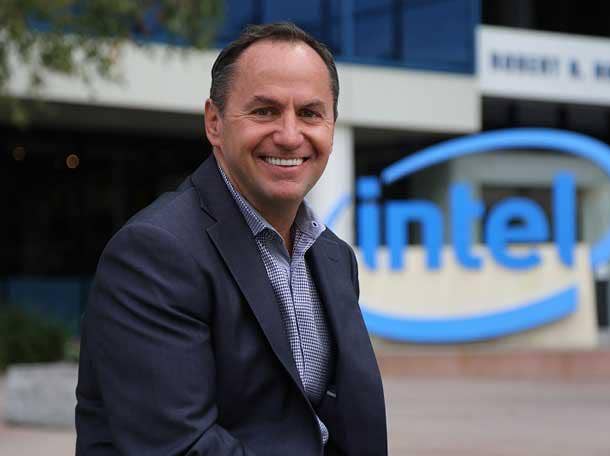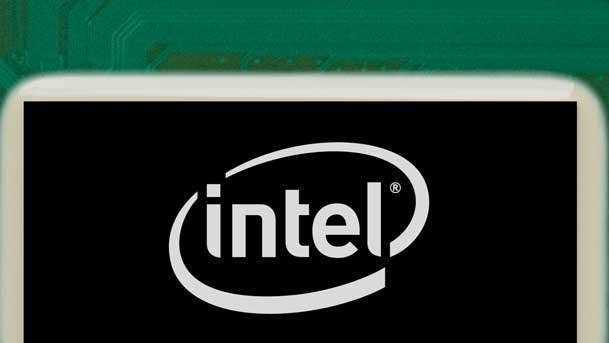Intel CEO Bob Swan: Demand For Data Remains Strong Despite Slowdown
Intel CEO Bob Swan talks about why the chipmaker believes demand for data-centric solutions remain strong despite the company's data center slowdown and how an improving chip supply will fuel growth for its PC business in the second half of 2019.

‘The Opportunity To Improve Is Endless’
Intel CEO Bob Swan said the demand for data is as strong as ever despite the slowdown in the company's data center business.
"The demand for data, and the need to store, process, analyze that data — those end demand signals are as strong as they've ever been," Swan told CNBC in the interview.
The Santa Clara, Calif.-based chipmaker reported in its first-quarter earnings that annual revenue will shrink this year as sales for its Data Center Group will slow down, which Swan largely attributed to cloud service providers, customers in China and enterprises reaching capacity after going on a buying spree in 2018.
[Related: Intel's Steve Long On CPU Shortage: 'We Undercalled Demand As An Industry' For PCs]
In an interview with CNBC on Friday, Swan described this buying pattern as "lumpy," where data center customers stockpile processors in waves to fuel their data needs. To Swan, this behavior doesn't mean that the overall data center market is slowing down.
Swan, who was appointed CEO in late January, also talked about how the company plans to improve CPU supply to fuel growth for its PC business. In addition, he elaborated on the company's 5G strategy and why it decided to exit the 5G smartphone modem business — which he told the Wall Street Journal was the result of the Apple-Qualcomm settlement.
Despite the tumultuous quarter, Swan said he still believes he has the best job in the world.
"The opportunity to improve is endless," he said. "This company, the technologies we build, the impact we have on the world is significant, and I'm as honored today as I was 90 days ago."
What follows is an edited transcript of Swan's remarks on CNBC.

On data center slowdown with Chinese customers, cloud service providers and enterprises.
The China market is a significant market for us, and it's been a big source of growth for us over time. If you look at what happened last year, is the demand from China was significant. The cloud service providers through the first nine months of the year last year were up almost 100 percent.
The question coming into the fourth quarter and first quarter this year is, what kind of digestion would we see with that massive growth from last year? What we've experienced over the last couple of quarters and what we see going forward is that consumption of the significant demand that we experienced last year is going to take a little bit longer, and that will be across all three of our segments within the data center business: the cloud, enterprise and government, and communications service providers.
On improving Intel's client CPU supply to fuel growth in the second half of 2019.
The client business in the quarter had a pretty good quarter. We're up 5 percent revenue, unit volume was down. And in the first half of the year, the demand signals remain relatively strong, and we don’t expect different demand signals in the second half.
What we do expect is we're going to improve the supply constraints that we've had in the first half of the year, and we believe by the second half, we'll have more capacity in place and being able to meet the demand profile that we're seeing throughout the course of the year. So it's less about a change in demand profile on the client side. It's more about getting more capacity in place to meet the demand profile we've seen over the last couple of years and expect for this year.

On why Intel still believes the demand for data-centric solutions are strong.
The trend that we've seen, the demand for data, and the need to store process analyst that data — those end demand signals are as strong as they've ever been. Whether it's in the enterprise or whether it's in the activities of consumers, demand profiles [are] extremely strong for the industry.
And it's just more lumpy buying patterns that we see, particularly in cloud, where they buy, then they consume, they buy, then they consume. And with the demand profile […] remaining relatively strong, we think medium- and long-term, it's going to be very beneficial for our business. We're just dealing with the lumpiness right now.
On why the end market doesn't reflect Intel's data center slowdown.
I think the distinction I would make is the end market, the demand for data, the creation of data, and the compute, analytics and storage required are very strong, and they haven't really changed. How chips get bought is a little lumpier than the end market. The end market stays relatively strong. Last year was a huge year for our Data Center Group business with 21 percent growth. Now we're just going through the digestion period, but the end markets we think are relatively strong.

On Intel's overall 5G strategy and why network infrastructure is the focus.
The 5G market for us is extremely important. It has been, and it always will be, and our expectations are we'll lead in 5G. When we talk about leading in 5G, it's primarily at the network, and we believe 5G will bring about the convergence of communications and compute at the networks, at the communications service providers, and at the [telecommunications firms]. That's primarily where we'll play. We have a very strong position. We see high growth characteristics, technology inflections, and we can make money for our investors. That's our primary focus.
We're also looking at opportunities for modems, connectivity, at the edge and Internet of Things and in the proliferation of devices that are going to benefit from lower latency in a 5G world. In the smartphones in particular, we've just concluded that we don't see an opportunity to make money, so we decided in the last couple weeks we'll continue to focus on 5G at the network, we'll continue to evaluate opportunities in the 5G modems at the edge, but in the smartphone arena, we just concluded we don't see a path to profitability and therefore don't want to divert our resources where we don't see opportunities to get attractive returns for our investors.
On the broader reasons behind Intel's 5G smartphone modem exit.
I mean obviously we have a large customer in the smartphone arena that we're serving today in the 4G or LTE world. We'll continue to serve them. As we looked at going into the 5G world, we looked at all the dynamics, characteristics going on, and we always try to conclude, do we have a real technology differentiation where we can make money? And in light of the dynamics in the market, we've made the conclusion that we do not, and therefore we made the decision to exit the 5G smartphone modem market.
On why Intel's capital expenditures are reaching new heights.
Our biggest capital allocation decisions are around putting in the capacity required to serve our customers, and we're a significant R&D investor, so we're investing in leading technology inflections. Those are the biggest components of our capital, and in 2018 and 2019 our capex is as high as it's ever been in the company's history. And that's a function of the investments we're making to grow the business.